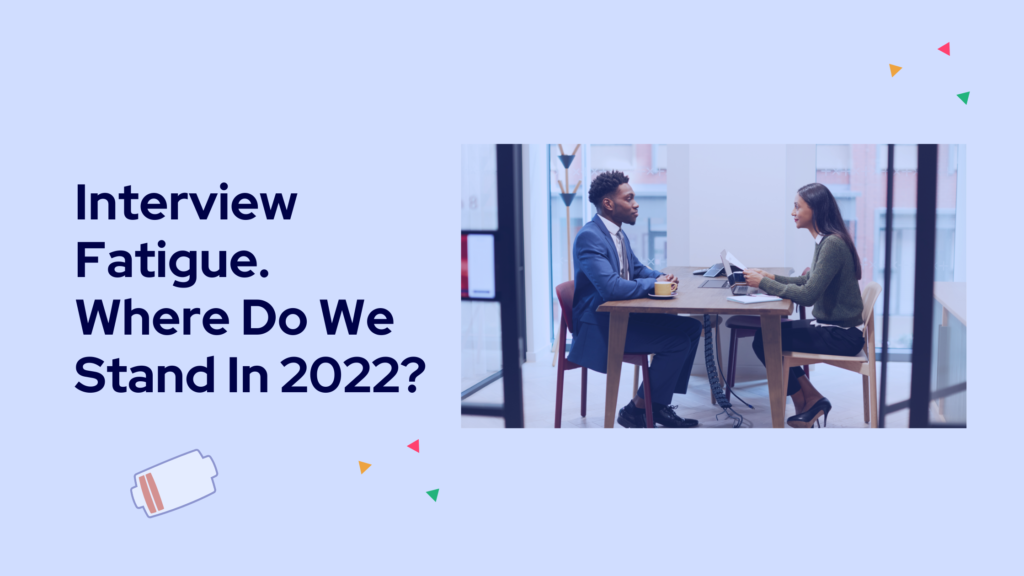We took an in-depth look at the phenomenon of interview fatigue this time last year. 12 months on and we find ourselves on surer footing when it comes to a return to ‘normal working life’ post-covid. But how is the interview process faring in terms of interview rounds and the adoption of new technology in the hiring process?

The Great Resignation and beyond
The UK employment rate in the period June – August 2022 settled at 3.5%. Last year at the time of writing our first article, it was 4.5%. This means that more people have been successfully interviewed and found employment year-on-year. But what does the interview landscape feel like right now? Are candidates like Mike Conley still experiencing nine rounds of interviews with no job offer as he described in his now viral 2021 Linkedin post.
In my opinion, yes candidates are still facing multiple interview rounds. I’m sure that many receive confusing or little feedback and are still at risk of exposure to bias and lack of robust diversity, equity and inclusion (DEI) practices. The same challenges and barriers that have always been here still apply today. However, there are things that we can do to improve the interviewing process. My first suggestion is to slow things down and take a look at basic steps to create a strong interview framework. By doing this, the risk of interview fatigue drops considerably for your hiring teams and prospective candidates.
The current state of play
When it comes to finding an adjective to describe what hiring has been like for the last 2-3 years, turbulent is the most fitting. We were catapulted into the rapid adoption of digital tools and remote hiring practices back in 2020 / 2021 – essentially without a rulebook. The Great Resignation followed with a candidate-led market searching for new challenges. There have been huge culture shifts due to the fallout from the pandemic and what people want from working life. And let’s not think the ‘Big Quit’ as it’s also known, is a thing of the past. One in five workers plan to quit their jobs in 2022, according to PwC’s Global Workforce Hopes and Fears Survey. There’s also thinking that the move towards revelation and quitting has in fact been rising for a decade. We must also add to this picture that there are workers who do not want to return to working patterns of the past. 39% of people polled by Morning Consult last year would rather quit than give up remote working.
Analyse and optimise
Many organisations have found digital technology and automated processes a huge help to save time and costs. But I wonder if the fast pace of change means that many companies are missing out on critically analysing areas of their process to strengthen them? In order to build a strong foundation, there must be an understanding of what’s on offer when it comes to technology and data.
I also urge you to think about your weaknesses. Are teams making hiring decisions based on decades-old approaches? Are you following a cohesive system and recording interviews or leaving them open to ‘gut feelings’? Do you provide actionable feedback to applicants who were not successful? When you understand these parts of the hiring puzzle and what you are doing really well, and where you are lacking, then you can apply them and strengthen and optimise your hiring process. If we apply the right tools in the right way, we reduce the risk of interview fatigue getting out of hand. Alongside this, you can build a strong interview structure with longevity and results. AI-based predictive interviewing is the first element that can help to increase speed to hire and improve candidate experience overall. So where to start I hear you ask?
- Choose an interview framework that works for you
I hugely advocate investing time researching and implementing a robust automated interview framework. An interview framework is a prepared format of discussion which is used to assess multiple candidates accurately and fairly. Interview structures are pre-planned to reduce bias, improve candidate experience and help you to find the best talent for the job. At Equitas, we offer Dynamic Frameworks and a creation service to help determine the best process and structure for you. There are many types of frameworks to choose from; competency, hypothetical to motivational and so on. The important thing to remember is that there is no right or wrong choice but rather, one that best fits your motivation and goals as an organisation. It is a must for successful hiring long term. Read more in our article, Make Every Interview Count with Interview Intelligence.
- Don’t lose sight of candidate experience
Your employees are your biggest asset. You want to hire top talent and you want candidates to stay in the role long-term and feel fulfilled. Employees shape and reflect your organisation’s culture and will become natural ambassadors of your employer brand. Employer brand relates to your organisation’s reputation as an employer, rather than your corporate brand image. The interview process is very much a part of your employer brand. Our platform allows you to have engaging conversations and supercharges your company brand so you get a higher acceptance rate. Things that you can start doing if not already in place are to communicate your employee value proposition (EVP) and what makes you unique as an employer and the benefits you offer. You can also provide candidates with constructive feedback and follow-ups, and use technology to provide a seamless interview experience for candidates and your hiring teams. Read our Candidate Experience Guide 2022 for more insights.
- Interview smartly
In order to secure the best talent you need to move quickly but this can impact the quality and fairness of interviews, costing you time and money. There may be a tendency to rush into the process and schedule endless rounds with little structure to be able to assess effectively. To caution further on multiple interview rounds, It’s now widely accepted that carrying out too many interviews does not help your process or successful hiring. I will mention Google’s rule of four briefly and their collaboration with ReWork is a great quick read to get up to speed on the risk of too many interviews.
Using Equitas software can make your process three times quicker. This means that you can focus on having engaging conversations rather than endless rounds that are hard to analyse or compare. Data and interview intelligence empower hiring managers to score more accurately and fairly. Take a step back and supercharge your interview process, allowing you to uncover talent, engage with candidates and get to offer faster. Candidates can then be compared easily so you can make more informed and less biased decisions. You want to hire the best candidates for the job quickly and without compromising on quality so that you can create a strong basis of faster, fairer hiring.
- Automated and remote interviews
As more employees continue to work remotely, companies need to be able to support remote interviewing. Hiring remotely can help improve the quality of interviews, streamline the process and help you find the best talent worldwide. By using interview intelligence, you can automate manual tasks by having a centralised system so your top talent can be found quicker.
In a candidate-led market, it’s vital to take the stress of running your remote or in-person interviews by automating key parts of the process. Importantly it can ensure consistency and fairness across all of your remote interviews. By capturing Interview data, the need for note-taking and scoring can be done faster and with more confidence. You can also track progress with candidates across multiple rounds of interviews. And when it comes to high volume campaigns, you also have the ability to quickly sort candidates, filter by benchmark scores and encourage a range of opinions on a candidate from diverse interview panels.
We created a Guide on How to Hire Remotely so check it out and how to get started.
5. Recognise and tackle bias
It’s extremely important to recognise that while bias can be challenged and monitored, it can’t ever be fully eradicated. Bias is insidious and part of human nature. Our brains take cognitive shortcuts that can lead to unconscious or implicit bias. This has serious consequences for how we judge and act towards others. By having robust processes in place, and adopting tools like transcriptions and recording, we can reduce the risk of bias. I highly recommend listening to this NPR podcast Understanding Unconscious Bias and how it works in the brain.
The conversation around Diversity, Equity and Inclusion (DEI) in every country is unique and we took a closer look at the situation in Northern Ireland. Find out more in our recent guide. It offers insights into main areas across the hiring journey and highlights some of the key trends and their levels of adoption, these include; attraction, sourcing and screening, interviews and assessment and strategic initiatives.
Assess. Optimise. Repeat
I hope that this article has provided some steps on how to improve your hiring process. The aim was to consider how to minimise interview fatigue, reduce bias and create a strong interview framework. If you ensure a well-trained pool of interviewers, who know to be objective, score on the candidate content, use good quality interview frameworks and have detailed, tailored scoring indicators for each and every question, then you have a great start on creating a fair approach, regardless of if it is face to face, remote or hybrid. As the months and years pass, stay agile and assess your process, optimise it and then repeat.
Our interview software digitises your end-to-end and ensures that every interview you do is as good as the last, both on video and in-person. Be three-times quicker without compromising on quality or fairness. Request a demo now to find out more


